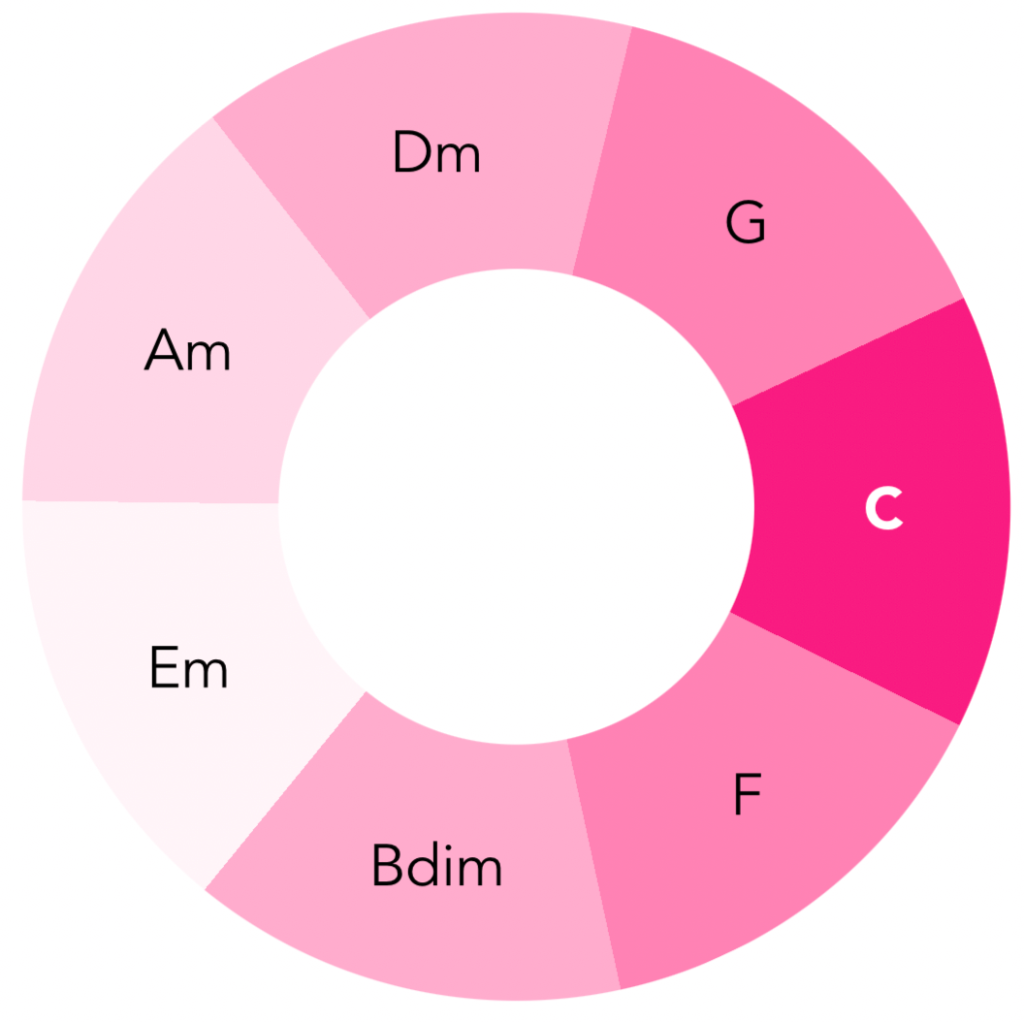Chord progressions play a crucial role in creating the mood and structure of a song. One powerful tool that songwriters use to craft interesting and cohesive chord progressions is the harmonic scale. By arranging chords in a specific order that promotes natural strength and flow, the harmonic scale allows for smooth transitions and harmonious movement between chords. In this article, we will delve into the concept of the harmonic scale and explore how it can be used to create captivating chord progressions. Specifically, we will examine the arrangement of chords in the key of C, where the harmonic scale organizes chords as C - F - Bdmin - Em - Am - Dm - G.
To fully grasp the power of the harmonic scale, we need to understand its structure and purpose. The harmonic scale is a specific arrangement of chords within a key that optimizes the relationship and resolution between them. Unlike other scales, such as the major or minor scale, the harmonic scale prioritizes the flow and movement of chords, not individual notes.
The harmonic scale visualizes chord relationships in a circular arrangement known as the circle of chords. Starting with the tonic chord, which in the key of C is C major, the circle moves clockwise, connecting chords in a way that reflects their natural resolution and harmonic strength. This arrangement helps songwriters navigate chord progressions with ease and create a sense of musical cohesion:

Within the harmonic scale, each chord tone possesses a unique resolution or movement tendency. By understanding these resolutions, songwriters can leverage chord progressions that feel satisfying and resonate with listeners. The strongest progressions are created by moving clockwise around the chord circle. This is because the chord resolutions within the harmonic scale create a natural flow and movement between chords. For example, you’ll find the resolution from the dominant G chord to the tonic C chord is a clockwise movement on the circle. The two exceptions are when moving directly to or from the tonic C chord. In those cases moving anti clockwise still creates a powerful progression.
Now that we grasp the concept of the harmonic scale and its chord arrangements, it's time to explore how to apply it in practical songwriting. Using the harmonic scale in the key of C, we can create chord progressions that evoke specific emotions and capture the listener's attention. As previously mentioned, moving clockwise around the circle always yields the most powerful progression. Thats because its moving in fifths down. But in the same way we don’t write melodies by always moving up and down to the next note in the scale, we don’t always create chord progressions by moving to the next chord clockwise in the harmonic scale. That would quickly become tedious and make every song sound the same! Instead we can use different movements around the circle to create different moods. For instance, we can experiment with progressions like C - Em - Am - Dm to create a melancholic atmosphere, or F - G - C to establish a triumphant and resolved feel. As a general rule, it's best to avoid moving anti clockwise away from the tonic, especially more than once in a row. Moving anti clockwise can produce an awkward, clunky sounding progression. Moving to the next but one chord is a movement of a second. Anticlockwise that will a second up and clockwise it’s a second down:

Both seconds up and seconds down create pleasing progressions. They are almost as powerful as fifths down. Moving to the chords on the opposite side of the circle (e.g. from C to Em or Am) is a movement of a third up (C - Em) or down (C - Am). Thirds down tend to be more popular than thirds up:

In the SongPad platform our representation of the harmonic scale uses different shades of background color to help you remember which movements work well. The dark the background the stronger the progression created by moving from your current position to the new chord.
While the harmonic scale provides a strong foundation for chord progressions, it is essential to remember that creativity knows no bounds. As a songwriter, feel free to experiment with variations and substitutions within the harmonic scale to add your unique touch to chord progressions. By breaking away from traditional patterns, you can create unexpected and captivating musical arrangements.
To solidify our understanding of the harmonic scale and its impact on chord progressions, let's examine popular songs that utilize this concept. Artists across various genres have leveraged the harmonic scale to create memorable and captivating compositions. One notable example is "Let It Be" by The Beatles, which employs the harmonic progression C - G - Am - F. This progression showcases the harmonic scale's ability to create a sense of resolution and emotional impact.
C - G is a fifth up (anticlockwise) but it’s directly from the tonic which means it works. It’s then followed by a movement of a second up (G - Am) which is itself a powerful progression and avoids consecutive movements of a fifth up away from the tonic. The movement from Am to F is a third down. Finally moving from the F to C although an anticlockwise movement to the next chord works well because, as mentioned above, it's a movement directly to the tonic C chord.
Mastering the harmonic scale opens up a world of possibilities for songwriters seeking to create compelling chord progressions. By arranging chords in a way that promotes natural strength and flow, the harmonic scale allows for seamless transitions and captivating musical journeys. Embrace the harmonic scale as a valuable tool in your songwriting arsenal and unleash your creativity to craft enchanting chord progressions.